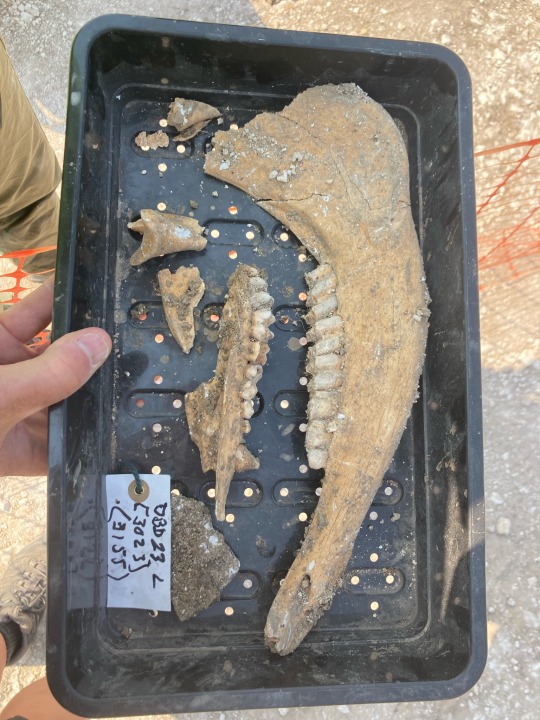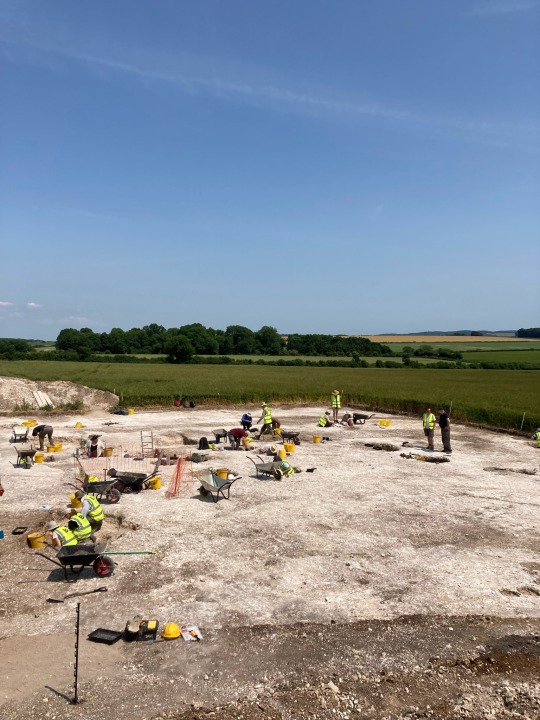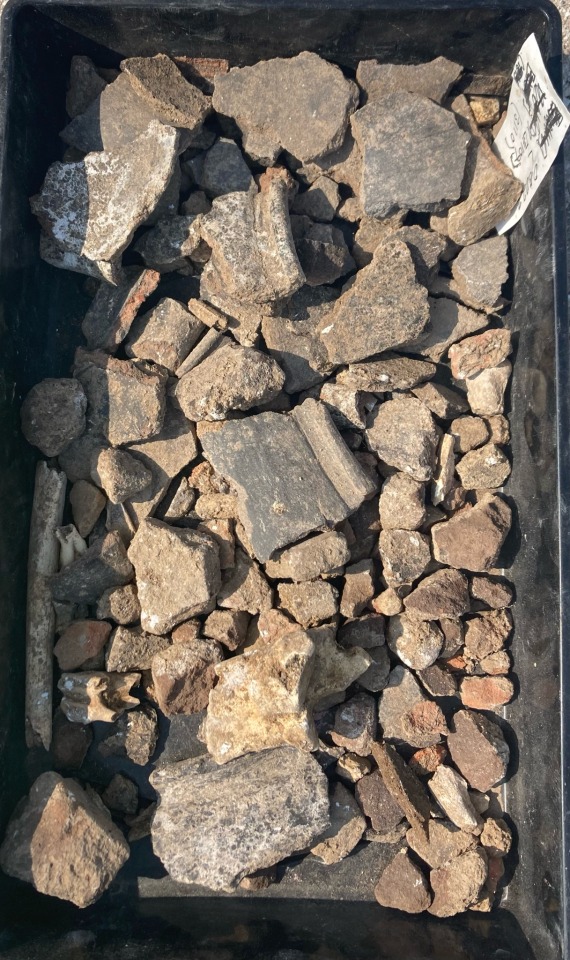#duropolis
Explore tagged Tumblr posts
Text








Durotriges ‘23
#archaeology#archeology#bournemouth uni#iron age#iron age society#iron age hillfort#durotriges#durotriges iron age#durotriges tribe#duropolis#dorset#100 BCE#durotriges big dig#BU big dig#bournemouth archaeology#my finds#all photos are mine
2 notes
·
View notes
Text
Así lo revela un estudio publicado este miércoles en ‘Nature’, en el que se describe por primera vez una estructura social, política y económica denominada “matrialocalidad”, en referencia al alto estatus e influencia de las mujeres. Las mujeres de ciertas sociedades de Gran Bretaña en la Edad de Hierro gozaron de altos niveles de empoderamiento, hasta el punto de que la tierra se heredaba a través de la línea sucesoria femenina y los maridos se trasladaban a vivir a las comunidades de sus esposas. La investigación, liderada por expertos genéticos del Trinity College Dublin (Irlanda) y arqueólogos de la Universidad de Bournemouth (Reino Unido), pone el foco en el yacimiento de un cementerio de la tribu celta de los Durotriges situado en el condado de Dorset, al sur de Inglaterra. Los científicos analizaron secuencias de ADN de varios miembros de esa única comunidad para obtener hasta 50 genomas de un camposanto que permaneció activo antes y después de la conquista romana de esa zona de Gran Bretaña en el año 43 a.C. La reconstrucción del árbol genealógico del clan familiar hallado en el cementerio confirmó que el “linaje materno de la mayoría de los miembros se remontaba a una sola mujer que habría vivido siglos antes”, mientras que las relaciones a través de la línea paterna eran “casi inexistentes”, explica en un comunicado Lara Cassidy, principal autora del trabajo. “Esto nos dice que los maridos se trasladaban a las comunidades de sus esposas al casarse, y que la tierra posiblemente se transmitía a través de la línea femenina. Esto es relativamente raro en las sociedades modernas, pero tal vez no siempre haya sido así”, señala la genetista del Trinity College. Esta “matrialocalidad”, destacan los expertos, no era exclusiva del área de Dorset. Al comparar sus datos con anteriores estudios genéticos de la Edad de Hierro, constataron que esta organización social se repetía en otras comunidades de Gran Bretaña. Por ejemplo, en el condado de Yorkshire, al norte de Inglaterra, se detectó la existencia de una línea materna dominante antes del 400 a.C., lo que sugiere que “se trataba de un fenómeno muy extendido y con profundas raíces en la isla”, agrega Dan Bradley, coautor del estudio. Aunque los cementerios de la Edad de Hierro en buen estado de conservación no abundan, los de los Durotriges de Dorset son una excepción gracias a las singulares costumbres funerarias de esta tribu celta. En el yacimiento bautizado como “Duropolis”, excavado cerca de la localidad de Winterborne Kingston desde 2009, los investigadores han observado en ese sentido que las tumbas más sofisticadas pertenecían a mujeres. Más allá de las evidencias que aporta la arqueología, casi todo lo que se sabía hasta ahora sobre la Edad de Hierro en Gran Bretaña provenía de los historiadores griegos y romanos, a quienes “no siempre se considera como los más fiables”, apunta Miles Russell, coautor y director de la citada excavación. “Dicho esto, sus observaciones sobre las mujeres británicas son interesantes a la luz de estos hallazgos. Cuando llegaron, los romanos se sorprendieron al ver que había mujeres en puestos de poder. Dos de los primeros gobernantes citados fueron reinas, Boudica y Cartimandua, quienes comandaban ejércitos”, indica el arqueólogo. Se sostiene a menudo, recuerda Russell, que los romanos exageraron las libertades de las que gozaban aquellas mujeres para reforzar “la imagen de una sociedad indómita”, pese a que la arqueología, y ahora la genética, subrayan que tenían “gran influencia en muchas esferas de la vida”. “De hecho -agrega-, es posible que la ascendencia materna fuera el factor principal que configuraba las identidades grupales”. Asimismo, los científicos sostienen que estas sociedades celtas tenían un “profundo conocimiento” sobre su propia genealogía, por el que promovían matrimonios múltiples entre ramas familiares distantes para evitar la endogamia. Fuente: El Desconcierto.cl

View On WordPress
0 notes
Text
Arqueólogos y estudiantes de la Universidad de Bournemouth en Inglaterra encontraron una antigua aldea celta en Duropolis, llamada así por la tribu Durotriges de la Edad de Hierro Celta
1 note
·
View note
Text
Archaeology: Researchers left stunned by 2000-year-old Iron Age death pit: ‘Frankly bizarr | Science | News
Archaeology: Researchers left stunned by 2000-year-old Iron Age death pit: ‘Frankly bizarr | Science | News
The oval shaped storage pits are thought to have originally been used to hold grain. Five humans in total were discovered in the pits, which is located in present-day Dorset. The Iron Age settlement has been dubbed Duropolis due to it once being a thriving farming settlement and is thought to have been occupied by the tribe known as the Durotriges. Over the last three weeks, the team of 65…

View On WordPress
1 note
·
View note